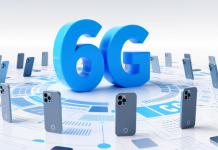DM Monitoring
CHICAGO: A collaboration of scientists in academia and industry have identified the most important features of abnormal protein fragments produced by mutated DNA of cancer cell to help researchers design better immunotherapies against cancer.
The study identifies five features of these abnormal protein fragments, called neoantigens, that optimize the ability to trigger the body’s T cells to attack the cancer and leave healthy tissue untouched. Using computer modeling, the researchers accurately predict 75 percent of effective neoantigens and eliminate 98 percent of ineffective mutant proteins in melanoma and a common type of lung cancer.
The features that the researchers identified as most important in selecting effective neoantigens include the abundance of a specific neoantigen in the tumor; the strength with which the neoantigen binds to vital immune proteins so the T cells can see it; the stability of the neoantigen on the immune protein complex; how much more often the immune proteins preferentially bind to the neoantigen versus the normal protein; and how foreign or distinct the neoantigen is from the normal protein.
All these factors make sense in selecting the best neoantigens. But the researchers were also surprised by some of the findings on criteria that were not important for neoantigen effectiveness.
“We were able to eliminate some of the assumptions that we scientists sometimes make about what makes a good neoantigen,” said co-senior author Robert D. Schreiber, a professor of pathology and immunology and director of the Center for Human Immunology and Immunotherapy Programs at Washington University School of Medicine. “There has been a general sense that the mutant proteins that make the best neoantigens are the most hydrophobic, meaning they repel water. It turns out, that characteristic didn’t show any relationship to neoantigen effectiveness.”
Schreiber pointed out that this study is focused on neoantigens that activate what are called CD8 T cells, which are responsible for killing the tumor cell. In the future, the study will focus on neoantigens that also activate a different type of cell, CD4 T cells, that stay behind the frontlines but direct CD8 T cells in their anti-cancer mission.
“In future work, we would like to conduct a similar analysis to identify the best neoantigens for triggering the CD4 T cells as well,” said Schreiber. “In designing an effective vaccine, we think we need at least one good CD8 neoantigen and one good CD4 neoantigen to trigger immune rejection of a tumor.”
The study, co-led by researchers at Washington University School of Medicine in St. Louis, was published Friday in the journal Cell.





